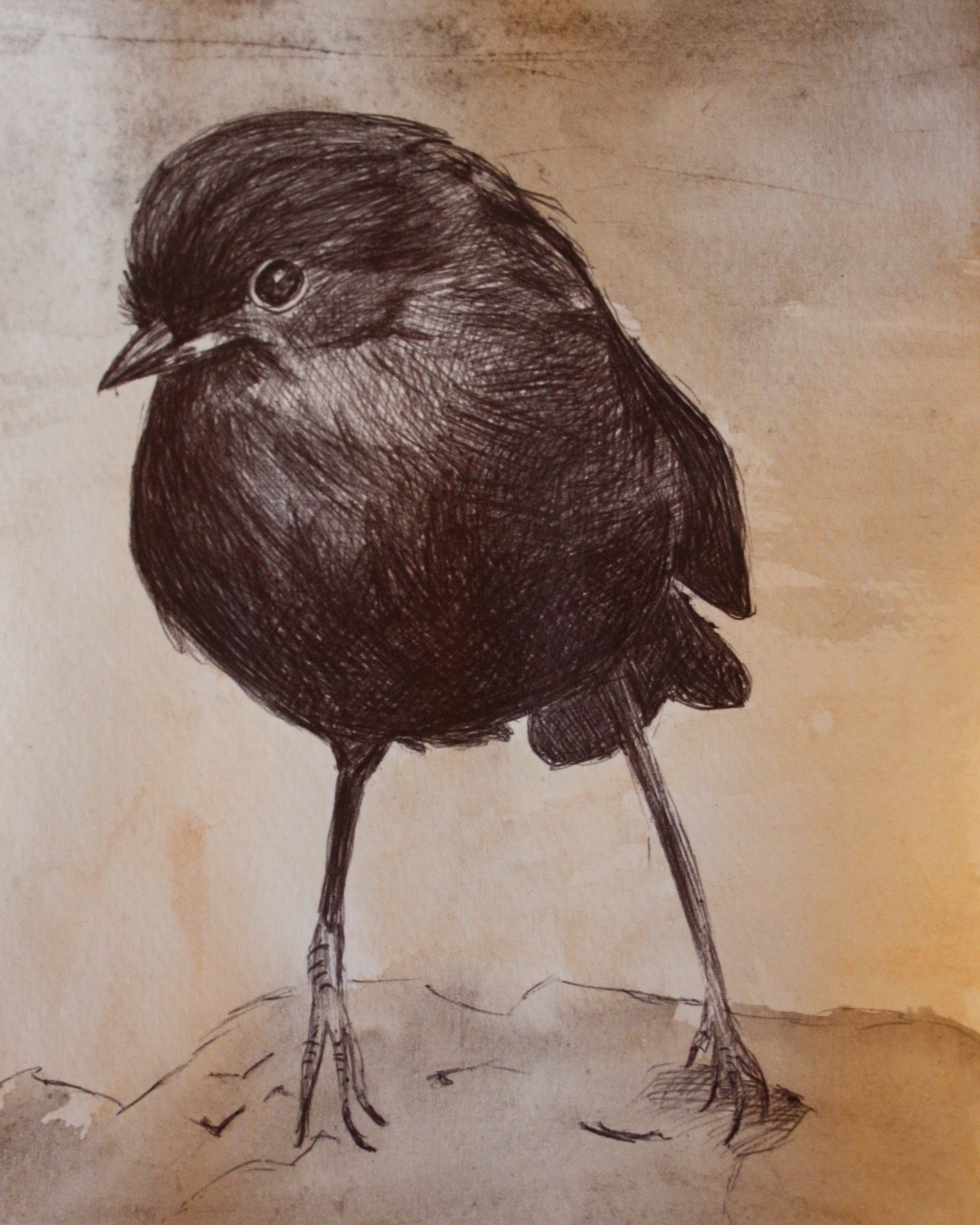Ballpoint pen and watercolour on paper.
1. Animal: Black robin (Petroica traversi):
- The black robin is endemic to the Chatham Islands in New Zealand where it is now confined to the southern extremity of its former range. - It is a quiet, confiding forest-dweller, alert and almost always active in the lower forest strata.
- Black robins breed annually in spring and summer. Cup-like nests are built in tree cavities or dense Muehlenbeckia vines, usually within 2 metres of the ground. Most clutches comprise two eggs. Only the female incubates but both parents care for the young. Pairs are capable of raising two clutches to independence per season.
- As at October 2020 the population on Rangatira Island was stable or slowly increasing, with at least 264 birds; the population on Mangere Is was in decline with 34 birds.
- Black robins originally inhabited the five major forested islands in the archipelago: Chatham, Pitt, Rangatira Island, Mangere, and Little Mangere. Human activities eliminated all original populations, the last in 1976 when the survivors were moved from Little Mangere to Mangere Island for conservation purposes. The species is famous world-wide for its inspiring recovery from imminent extinction in the early 1980s.
- The black robin is a small, rotund bird intermediate in size and form between its tomtit and robin relatives. - Both sexes are completely black at all ages, though juveniles have subtle pale streaking on the crown.
2. Why they are endangered?
Black robins' key vulnerabilities are a very low reproductive output, specialised forest-dwelling and foraging habits, narrow tolerances to habitat type and quality, and very limited powers of dispersal.
Chronic inbreeding over more than a century and severe loss of genetic diversity further jeopardise resilience. Black robins are extremely vulnerable to external threats. Original populations were eliminated swiftly by introduced cats and Pacific rats. Mice and starlings may also threaten population viability.
